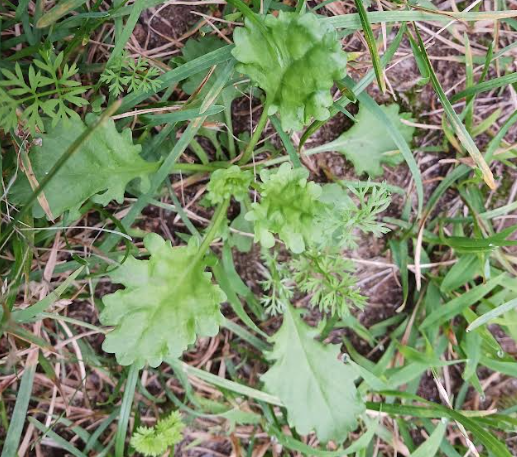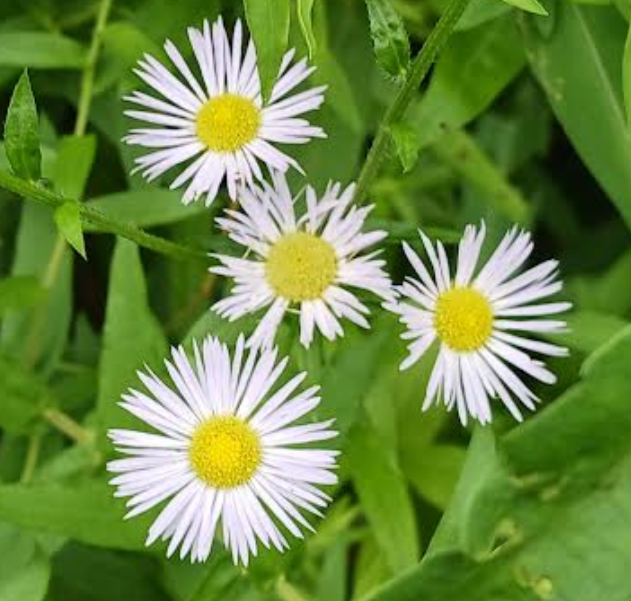Unless you start off with a virgin barren plot of land, and radiate the hell out of it, you are going to be contending with other plants, whether you like it or not. Some of these could be have been planted by a former home owner, and these are now established and adding wild life value. Others blow in with the wind or are dropped by birds and mammals. In my woodland garden, I choose to keep an eye out for what is going on, but I mostly let things be. I try to promote native perennials as much as I can, but beyond removing oriental bittersweet and pulling Japanese knotweed wherever it pops up, I am not engaging in what I know is a futile battle. I also left some of the original plantings as they provide shelter and privacy. But anything that has been added in the last 15 years (wow time flies) has been of the native, close neighbor, and/or biennial/perennial kind. I also don’t follow the English garden plan of distinct marked plots. It’s a bit of a free for all, in a plant sense, and as the garden has matured, it has become more dense (visitors call my yard the ‘jungle’). One advantage is that there is less room for unintended plant visitors and they are kept in check by the plantings already duking it out for resources.
But, despite that, they manage to surprise me and pop up in unexpected areas. I know there are gardeners out there that would go in panic mode about these trespassing weeds, but some of these have aesthetic or wildlife value as well. One of them is Deptford pink (Dianthus armeria) (previously mentioned as a plant I noticed a town or two away) which has now taken up residence in the yard, in a spot where I did some clearing to make room for additional perennials. The seeds might have been there waiting for an opportunity like this.

Another one is the ox-eye daisy (Leucanthemum vulgare). This is an early flowering plant and actually seems to coordinate its appearance with another white bloomer (Foxglove beardtongue – Penstemon digitalis), so much so that I can call this the ‘white phase’ of the garden, as most other plants are not ready yet to push flowers. This is also a Eurasian plant that has taken over this continent. I tolerate it as it is an early food source for bees and other insects while not much else is around. It is also easily identifiable by its rosette leaves when juvenile. So you can find it. move it, or remove it.


Foxglove beardtongue has been proliferating throughout the yard. The plants have numerous easily identifiable seedlings that you can transplant if you have additional space. But apparently it does not need our helping hand to do well
Another opportunist plant is native but is an annual – Erigeron annuus (annual fleabane). This member of the Asteraceae family has immense food value – The nectar and pollen of the flowers attract a variety of insects, including Halictid bees, masked bees, Sphecid wasps, Vespid wasps, Syrphid flies, soldier flies, blow flies, Tachinid flies, flesh flies, plant bugs, and miscellaneous beetles. Various insects feed on the foliage, roots, and other parts.


hello from a fellow cape cod gardener, i am really enjoying your blog! was wondering if i was reading your post right, penstemon digitalis is a native in our county, it reads a bit like you’re putting it in the eurasian category with the leucanthemum vulgaris. grateful for the time you take to write this blog – it’s stuff i feel passionate about but no doubt i’d write a few posts and then get distracted/off-track, so kudos to you and thank you!
Hi Sophie – my apologies my post was confusing – the interloper is the oxe-eye daisy, and it complements the penstemon digitalis which is indeed the native plant. I might need an editor to take a look at what I write!
Anyway – happy to hear that you are enjoying it. For me it is a way to record what is going on in my yard. I keep promising myself I will do a better job at doing this consistently